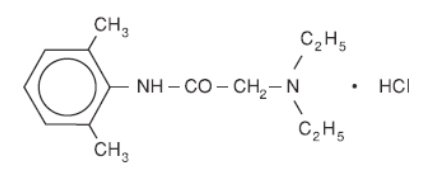Xylocaine Topical Solution
Generic name:lidocaine hydrochloride
Dosage form: topical solution
Drug class:Topical anesthetics
Medically reviewed by Drugs.com. Last updated on Oct 22, 2021.
On This Page
Topical Solution
Rx only
Xylocaine Topical Solution Description
4% Xylocaine (lidocaine HCl) Topical Solution contains a local anesthetic agent and is administered topically. See INDICATIONS for specific uses.
4% Xylocaine Topical Solution contains lidocaine HCl, which is chemically designated as acetamide, 2-(diethylamino)-N-(2,6-dimethylphenyl)-, monohydrochloride and has the following structural formula:

The 50 mL screw-cap bottle should not be autoclaved, because the closure employed cannot withstand autoclaving temperatures and pressures. Composition of 4% Xylocaine (lidocaine HCl) Topical Solution: Each mL contains lidocaine HCl, 40 mg, methylparaben, and sodium hydroxide and/or hydrochloric acid to adjust pH to 6.0–7.0.
An aqueous solution. NOT FOR INJECTION.
Xylocaine Topical Solution - Clinical Pharmacology
Mechanism of Action
Lidocaine HCl stabilizes the neuronal membrane by inhibiting the ionic fluxes required for the initiation and conduction of impulses, thereby effecting local anesthetic action.
Hemodynamics
Excessive blood levels may cause changes in cardiac output, total peripheral resistance, and mean arterial pressure. These changes may be attributable to a direct depressant effect of the local anesthetic agent on various components of the cardiovascular system.
Pharmacokinetics and Metabolism
Lidocaine HCl may be absorbed following topical administration to mucous membranes, its rate of absorption and percent of dose absorbed depending upon concentration and total dose administered, the specific site of application and duration of exposure. In general, the rate of absorption of local anesthetic agents following topical application occurs most rapidly after intratracheal administration. Lidocaine HCl is well-absorbed from the gastrointestinal tract, but little intact drug appears in th...



